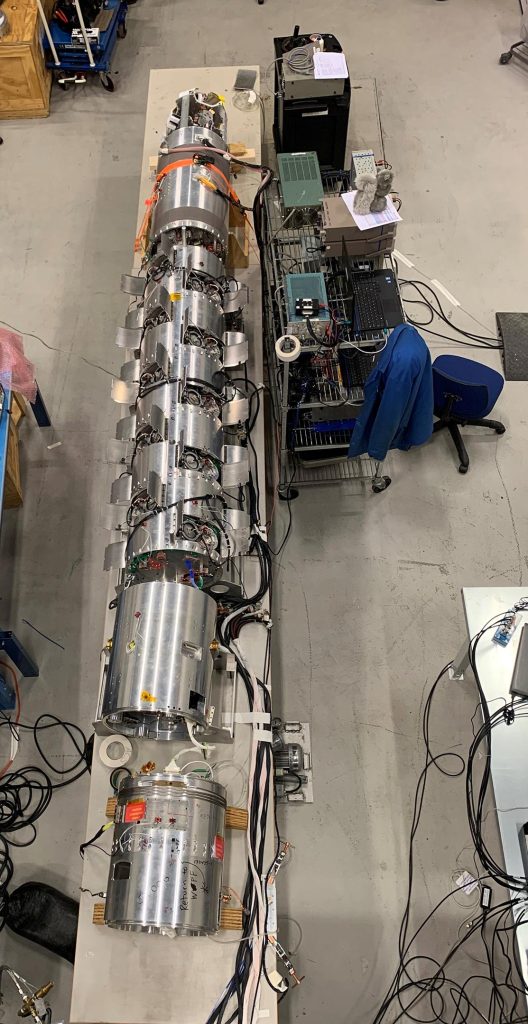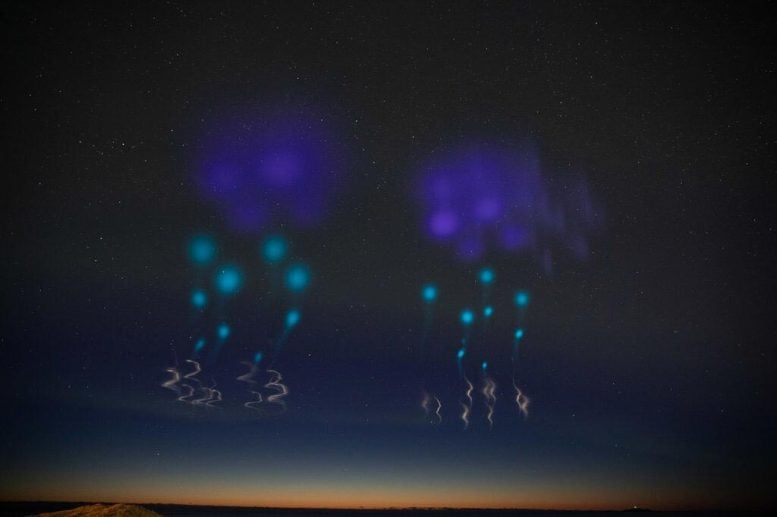North of Norway over the Norwegian and Greenland Seas, a magnetic bubble known as the cusp surrounds Earth and dips inward. Some air in the cusp is unusually dense, and the CREX-2 mission aims to understand why. Credit: Andøya Space Center/Trond Abrahamsen
Strange things happen in Earth’s atmosphere at high latitudes. Around local noon, when the Sun is at its highest point, a funnel-shaped gap in our planet’s magnetic field passes overhead. Earth’s magnetic field shields us from the solar wind, the stream of charged particles spewing off the Sun. The gap in that field, called the polar cusp, allows the solar wind a direct line of access to Earth’s atmosphere.
Radio and GPS signals behave strangely when they travel through this part of the sky. In the last 20 years, scientists and spacecraft operators noticed something else unusual as spacecraft pass through this region: They slow down.

The vapor tracer ampule doors are open on the CREX-2 payload during testing at the Andøya Space Center. Credit: NASA
“At around 250 miles above Earth, spacecraft feel more drag, sort of like they’ve hit a speed bump,” said Mark Conde, a physicist at the University of Alaska Fairbanks and the principal investigator for
Colorful clouds formed by the release of vapor tracers from two rockets allow scientists to measure winds. Credit: NASA/Lee Wingfield
This aspect of the mission requires complicated logistics. “It’s quite a big chess game,” Conde said. The team needs to see these tracers from several vantage points to get a comprehensive understanding of the wind patterns. Scientists, some of them graduate students, will be stationed throughout Scandinavia to photograph the tracers over the course of 20-30 minutes. One student will document them from a plane flying from Reykjavík, Iceland, and others will capture the glows from two sites on the Norwegian island of Svalbard.
There are some “Goldilocks” conditions necessary for launch. The cusp is only present around local noon, but the sky needs to be dark for the tracers’ glow to be visible. That’s why CREX-2 will launch in mid-winter, when there’s very little sunlight at these extreme northern latitudes.
“We’re threading a needle,” Conde said. “We get about an hour or two each day when conditions are suitable to do the experiment.” And, at least two of the stations need a clear view of the tracers for sufficient data collection. The 2019 launch window was open for 17 days, not one of which was suitable for CREX-2 to fly.
“The rocket business is a high-stakes game,” Conde said. “You’ll spend two or three years developing a payload, but ultimately, it all comes down to choosing when to press the button to capture the science you want.” Sometimes, that moment doesn’t arrive. Conde and the CREX-2 team are eager for another opportunity to launch. “Honestly, it feels amazing,” Conde said. “To finally be trying again — I’m not quite sure I have the words for it.”
